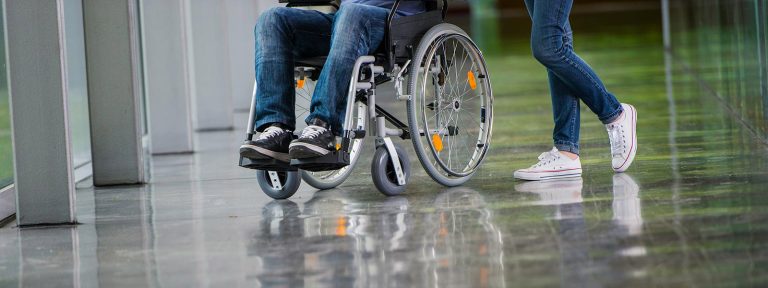Personal injury law in Ontario encompasses legal remedies and defenses involved in civil lawsuits brought as a result of wrongful conduct. While this sounds complicated, it’s actual quite easy to understand. Essentially, it refers to a scenario where a person suffers harm from an accident or injury, and someone else maybe legally responsible for that harm. The law covers a broad spectrum of cases. These can range from car accidents and workplace injuries to medical malpractice and slip-and-fall incidents. Understanding personal injury cases is crucial for victims. It helps them recognize their rights and the potential avenues for legal recourse. Whether it’s seeking compensation for medical expenses, emotional trauma, or financial loss, personal injury law empowers individuals to hold responsible parties accountable for their actions. For those affected by unintentional or intentional injuries, knowing the intricacies of personal injury law is the first step toward securing justice and financial compensation. This knowledge is not only important for the injured party but also for their family members and legal representatives.
Common Types of Personal Injury Cases in Ontario
Car Accident Claims
Common Causes and Types of Car Accidents
In Ontario, car accidents are a prevalent cause of personal injury claims. Common causes include driver negligence such as distracted driving, speeding, and driving under the influence. Weather conditions like snow and ice, and road issues like poor signage or inadequate lighting, also contribute to accidents. The types of car accidents range from minor fender-benders to severe collisions involving multiple vehicles. Motorcycle accidents and pedestrian accidents also fall under this category and often result in more serious injuries due to the exposed nature of the victims.
Steps to Take Following a Car Accident
If you are in a car accident in Ontario, the first step is ensuring the safety of all parties involved. If there are any injuries, call emergency services immediately. It’s essential to file a police report for accidents with significant damage or injuries, as this report is crucial when filing an insurance claim. Exchange information with the other driver, including names, contact details, and insurance information. Make sure you document the accident scene. Take multiple photographs and gather any witness statements. All of these steps are vital in building your case for a personal injury claim.
How to Prove Negligence in Car Accident Claims
Proving negligence is central to a car accident claim in Ontario. The injured party must demonstrate that the other driver owed a duty of care, breached that duty through negligent actions, and caused the accident resulting in injuries. This could be through texting while driving, speeding or not paying attention to other drivers. Evidence such as witness statements, the police report, and photographic evidence from the accident scene can support these claims. Demonstrating the extent of the injuries and their impact on one’s life is also crucial. This includes medical records, bills for medical treatment, and expert testimony about long-term effects. In Ontario, the legal principle of ‘negligence’ guides these claims, and a successful case can lead to compensation for medical expenses, lost income, and other damages related to the accident. Workplace accidents are also common and can lead to accident claims in Ontario. Whether it’s a fall accident, exposure to unsafe conditions, or lack of a safe working environment, injured parties can seek compensation. Workers’ compensation laws in Ontario aim to provide financial compensation for medical expenses and financial loss due to workplace injuries.
Medical Malpractice Cases
Definition of Medical Malpractice
Medical malpractice in Ontario refers to situations where a patient suffers harm due to the negligence or substandard care provided by a medical professional. This encompasses a wide range of scenarios, from errors in diagnosis, treatment, aftercare, or health management. To establish a case of medical malpractice, it must be proven that the care provided deviated from the standard expected of a reasonably competent medical professional under similar circumstances, and this deviation directly caused harm to the patient.
Examples of Medical Malpractice
Examples of medical malpractice include surgical errors, such as operating on the wrong body part or leaving surgical instruments inside the patient, misdiagnosis or delayed diagnosis that leads to a worsening of the patient’s condition, and improper medication or dosage. Birth injuries resulting from negligence during childbirth and failure to obtain informed consent before a procedure are also considered medical malpractice. Or it could be a doctor delaying treatments or medical visits when they were necessary. Each of these instances can have serious, sometimes lifelong consequences for the patient.
The Process of Filing a Medical Malpractice Claim
Filing a medical malpractice claim in Ontario involves several steps. Initially, the injured party should gather all relevant medical records and documentation related to the treatment. Consulting with a personal injury lawyer specialized in medical malpractice is crucial to assess the viability of the claim. The lawyer will likely engage medical experts to review the case and provide an opinion on whether the standard of care was breached. Once sufficient evidence is collected, a legal action can be initiated against the medical professional or healthcare facility. The process typically involves proving negligence, demonstrating the extent of the injuries, and quantifying the damages suffered. Successful medical malpractice claims can result in financial compensation for medical expenses, lost income, and pain and suffering endured by the patient.
Slip and Fall Injuries
Common Locations and Causes of Slip and Fall Accidents
Slip and fall accidents in Ontario commonly occur in places like retail stores, office buildings, apartment complexes, and public sidewalks. The causes can range from wet floors, icy walkways, uneven surfaces, poor lighting, to obstacles on the ground. In commercial settings, spills that aren’t promptly cleaned or warning signs that aren’t placed can lead to falls. In residential areas, inadequate maintenance, such as not clearing snow or fixing broken steps, is often the culprit.
Liability in Slip and Fall Cases
Establishing liability in slip and fall cases involves demonstrating that the property owner or manager was negligent in maintaining a safe environment. This negligence could be failing to address a hazardous condition they knew or should have known about. Slip and Fall Accidents Premises liability claims arise when individuals suffer injuries due to unsafe conditions like wet floors or other dangerous conditions on someone else’s property. Property owners have a legal duty to ensure their premises are safe for visitors. In Ontario, the Occupiers’ Liability Act sets out the responsibilities of property occupiers to ensure the safety of visitors. If they breach this duty, and that breach results in someone getting injured, they can be held liable for the damages.
What to Do After a Slip and Fall Accident
After a slip and fall accident in Ontario, it’s important to document the scene immediately. Take photos of the hazardous condition and gather contact information from any witnesses. Seek medical attention, even if the injuries seem minor, as some symptoms may not be immediately apparent. Report the accident to the property owner or manager, but avoid making detailed statements or signing documents until you have legal advice. Finally, consult a personal injury lawyer to understand your rights and the potential for a premises liability claim. They can guide you through the process of seeking compensation for medical bills, lost wages, and pain and suffering resulting from the accident.
Workplace Accidents
Types of Workplace Injuries
In Ontario, workplace injuries can vary widely depending on the nature of the job. Common injuries include slips, trips, and falls, which can lead to fractures, bruises, or more serious conditions like spinal cord injuries. Repetitive strain injuries are prevalent in office settings, while more hazardous workplaces, such as construction sites, might see severe injuries from machinery or falls from heights. Exposure to harmful substances or environments can also lead to long-term health issues.
Workers’ Compensation vs. Personal Injury Claims
When it comes to workplace injuries in Ontario, workers generally have two main avenues for compensation: workers’ compensation and personal injury claims. Workers’ compensation, administered by the Workplace Safety and Insurance Board (WSIB), provides benefits to employees injured on the job regardless of fault. This system covers medical expenses and a portion of lost wages but typically bars the employee from suing the employer. In contrast, personal injury claims are an option if the injury resulted from someone else’s negligence, such as a third-party contractor or faulty equipment manufacturer. These claims can lead to higher compensation, including for pain and suffering, but require proving the other party’s negligence.
Rights of Injured Workers
Injured workers in Ontario have certain rights under the law. They are entitled to receive appropriate medical care and, if eligible, compensation from the WSIB. Workers also have the right to return to their job after recovery, and employers must accommodate the injury to a reasonable extent. If the injury is due to employer negligence or a third party, the worker may have the right to pursue a personal injury lawsuit for damages beyond what WSIB provides. Consulting with a knowledgeable personal injury lawyer can help navigate these legal waters and ensure the worker receives all entitled benefits and compensation. Dog owners in Ontario can be held liable if their pet causes injury to another person. Dog bite cases often involve seeking monetary compensation for medical treatment and emotional trauma caused by the attack.
Product Liability Cases
Understanding Product Liability
Product liability in Ontario pertains to legal responsibility borne by manufacturers, distributors, or sellers for injuries caused by defective or unsafe products. This area of personal injury law is governed by the principle that companies must ensure their products are safe for consumers. Liability can arise from design defects, manufacturing flaws, or inadequate warnings and instructions. In cases like these, the injured party must demonstrate that the product was defective and that this defect directly caused their injury.
Examples of Defective Products
Defective products can range from everyday items to complex machinery. Examples include electrical appliances with faulty wiring that can lead to fires, motor vehicles with defective components leading to accidents, or children’s toys with choking hazards. Pharmaceuticals with harmful side effects not disclosed properly, or industrial equipment that fails due to poor design or construction, also fall under this category. In each instance, the defect can lead to serious and sometimes catastrophic injuries.
Steps in Filing a Product Liability Claim
To initiate a product liability claim in Ontario, the first step is to document the injury and how the product caused it. This includes preserving the product for evidence and collecting medical records that show the extent of the injuries. Next, it is essential to consult with a personal injury lawyer experienced in product liability cases. They can help determine who is liable – whether it’s the manufacturer, distributor, or retailer – and guide the process of building a case. The claim will involve proving the product’s defect, showing the manufacturer or seller’s liability, and quantifying the damages for medical treatment, lost income, pain and suffering, and any other losses incurred due to the injury.
Other Types of Personal Injury Cases
Assault and Battery Claims
In Ontario, assault and battery are intentional acts that can lead to personal injury claims. Assault refers to the threat of harm, while battery is the actual physical harm. Victims of assault and battery can seek legal action against the perpetrator not only for physical injuries but also for emotional trauma. These claims often coincide with criminal charges, but the civil lawsuit focuses on obtaining compensation for the victim.
Defamation: Libel and Slander
Defamation, including libel (written defamation) and slander (spoken defamation), involves making false statements that harm someone’s reputation. In Ontario, to win a defamation lawsuit, the claimant must prove that the statement was made to a third party, it referred to the claimant, and it damaged the claimant’s reputation. Successful defamation cases can result in monetary compensation for damages suffered.
Dog Bites and Animal Attacks
Dog bites and other animal attacks can lead to personal injury claims in Ontario under the Dog Owners’ Liability Act. This law holds the dog owner strictly liable for damages caused by their dog, regardless of the animal’s previous behavior. Victims can seek compensation for medical treatment, lost wages, and pain and suffering resulting from the attack.
Choosing the Right Personal Injury Lawyer (150 words)
Importance of Specialization
When pursuing a personal injury claim in Ontario, selecting a lawyer with specialized experience in your type of case is crucial. Different personal injury cases, such as car accidents, medical malpractice, or workplace injuries, require specific legal knowledge and expertise. A specialized lawyer can navigate the complexities of your case more effectively and improve the chances of a favorable outcome.
What to Look for in a Personal Injury Lawyer
Key qualities to look for include a proven track record of handling similar cases, a thorough understanding of Ontario’s personal injury laws, and a strong reputation in the legal community. Accessibility and a willingness to communicate clearly and regularly are also important.
Questions to Ask a Potential Lawyer
When consulting with a potential lawyer, such as a professional from Bergel Magence, ask about their experience with cases similar to yours, their approach to client communication, and their fee structure. Inquire about their success rates in trials and settlements to gauge their effectiveness in representing clients like you. Also ask how long the firm has been in business.
Call to Action
If you or someone you know is navigating the complexities of a personal injury case in Ontario, don’t face this challenge alone. Reach out to Bergel Magence for expert legal assistance. Our team of dedicated personal injury lawyers specializes in a wide range of cases, from car accidents and medical malpractice to workplace injuries and more. At Bergel Magence, we understand the impact these cases have on your life and are committed to helping you achieve the justice and compensation you deserve. Contact us for a free consultation. Let our expertise be your guide and support through this journey. With Bergel Magence, you’re not just getting a lawyer; you’re gaining a partner who will stand by you every step of the way. Take the first step towards your recovery and legal resolution today.



